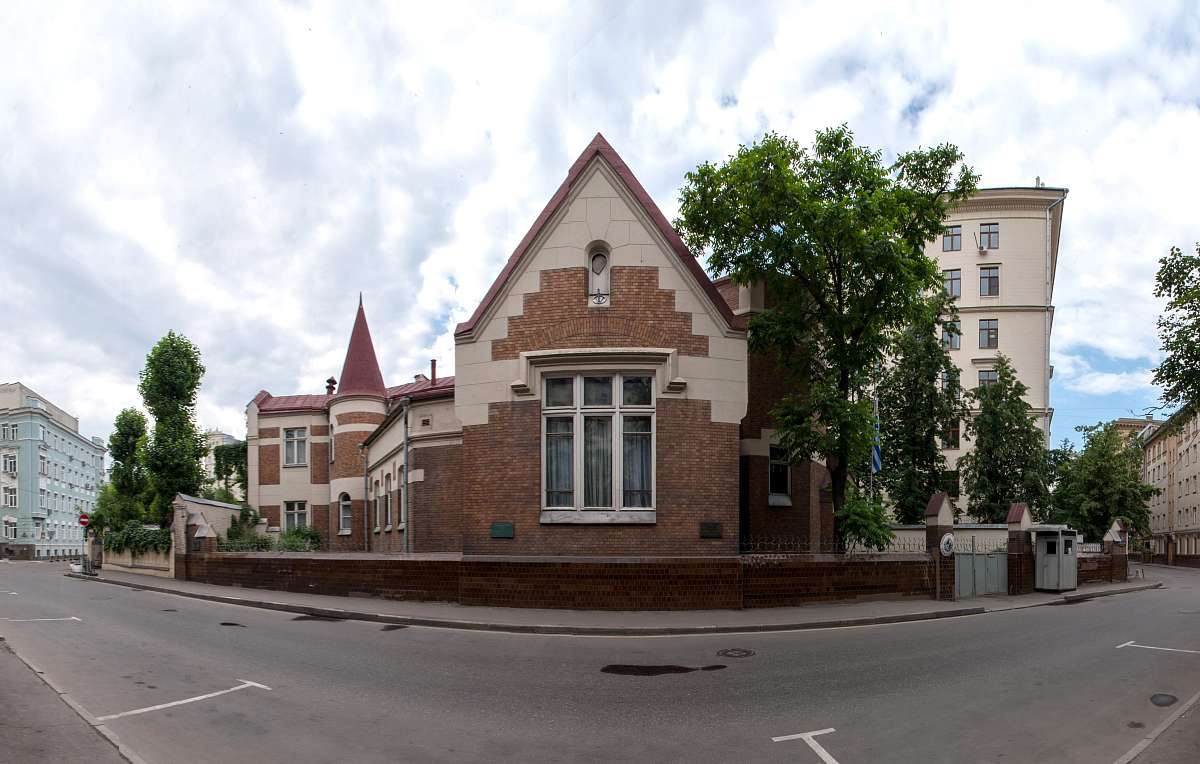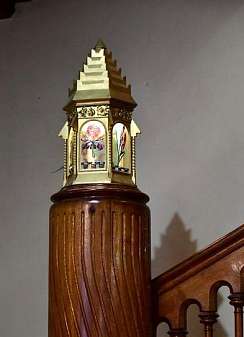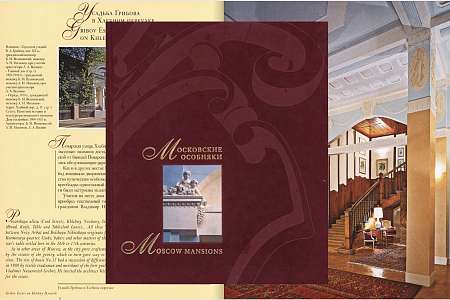



Historical and cultural landmark of federal significance
This tiny castle holds a special place in the creative works of the famous architect Franz Osipovich Schechtel, since he built it for himself and his family. In 1896 37-years old architect bought a small piece of land at the corner of Trekhprudny and Yermolayevsky lanes, close to the estates of his patrons and clients – the Morozovs. Schechtel demolished all timber structures located on the land and built a two-storey brick mansion based on his own design.
The building jokingly called by its creator a "hut of foul architecture", projected due to its stepped stone wall like a fortress city with a round tower, crowned with conical roofing. The twining plants wreathed a huge window, scrambling the ceramic tiles decorating the main façade walls. The front entrance to the house was located in a hexagonal tower to the right even more hinting at gothic patterns.
The internal space is built around the interaction and contrast of various volumes, backgrounds and décor, combining the natural light and colorful touches of stained-glass artwork. From the hall decorated with various woodwork of the late 19th century, one can proceed to a spacious parlor, dining-room and a chamber mantelpiece room. The center of the building is decorated with an oak carved staircase, enveloping the skylight tower with its winding flights. The living and obstinate organism of the house, being unmindful of the symmetry, seems to be growing out of this tower with a golden dome of the lamp.
The master's study is enriched with a tremendous "medieval" mantelpiece. Over it – a carved horizontal of the gallery, where the narrow spiral of the staircase leads: once the rich library of Mr. Schechtel was there. Anton Chekhov, Konstantin Korovin, Leonid Sobinov, Isaak Levitan, Mikhail Vrubel often were here.
In 1904 Schechtel annexed a two-storey part from the side of the yard to the mansion. In 1910 the architect moved to his other house on Bolshaya Sadovaya Street, and the mansion in Yermolayevsky passed into the ownership of freewoman E.Ya. Dunaeva.
In 1944 the property was transferred to the Central Office for Servicing Foreign Citizens (former name of GlavUpDK) and since then has been used to accommodate diplomatic missions.
